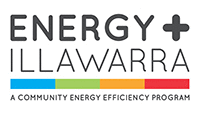COOKING
Cooking accounts for about 4-5% of your total energy bill. By using your cooking appliances efficiently, and changing the way you prepare food, you can make a difference to your energy use, without sacrificing your well-being. After all, food is one of the great joys in life!
COOK TOPS
Other things to consider when using an electric or gas stove top are:
- Keep the lid on pots when possible to reduce heat loss. It makes the food cook faster and keeps the kitchen cooler.
- Pots and pans with flat bases allow for more contact with the heating elements, which heats your pan more efficiently.
APPLIANCES
- Check the door seals for any air leakage. Replace the seals to prevent wasted heat, energy and money.
- Try to avoid pre-heating the oven unnecessarily.
- If possible, cook several things at once.
- Reheat food in the microwave instead of the oven.
- Consider using smaller appliances like electric fry pans, slow cookers or microwaves as an alternative.
Some people think that microwaves can contaminate food. This is untrue. Microwaves cause water molecules in food to vibrate which produces heat needed to cook the food. This makes foods high in water content, like vegetables and soups, great for cooking in the microwave.
FREEZING MEALS FOR LATER
There are some things you should know in order to always ensure the food is safe to eat. When it comes to freezing and thawing food, the NSW Food Authority recommends:
- Only freeze food once – bacteria can multiply when food defrosts. If you refreeze uncooked food, bacteria can multiply to dangerous levels.
- Never thaw and refreeze raw food, especially meats.
- You can only refreeze food after it has been cooked thoroughly.
- Cooked leftovers should only be frozen once. After defrosting discard what is not eaten and never refreeze a second time.
- Never thaw food at room temperature – bacteria grow best at this temperature. Try to plan ahead – food defrosts safely overnight in the fridge.
For more information on food safety visit:
www.foodauthority.nsw.gov.au
